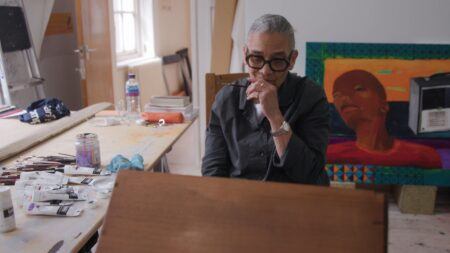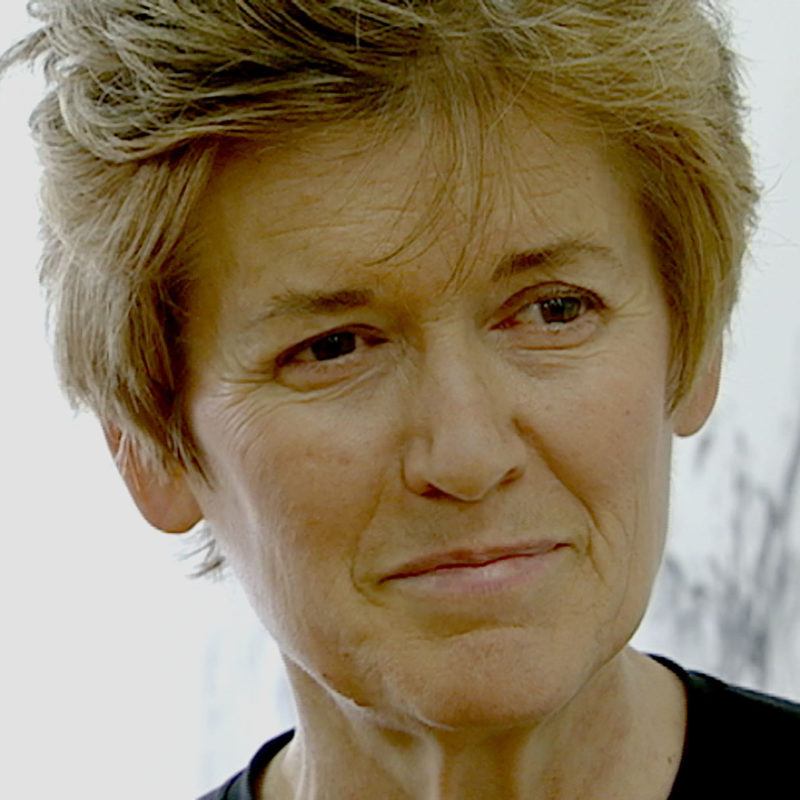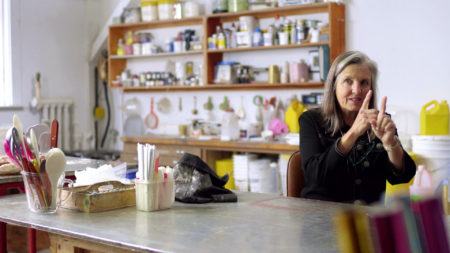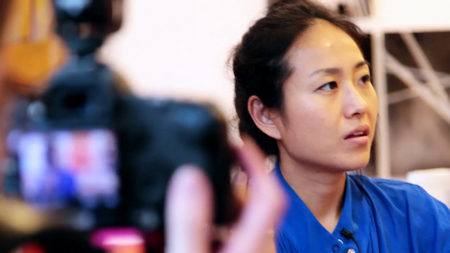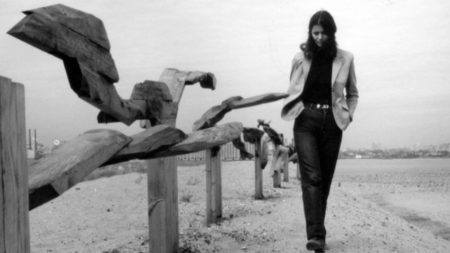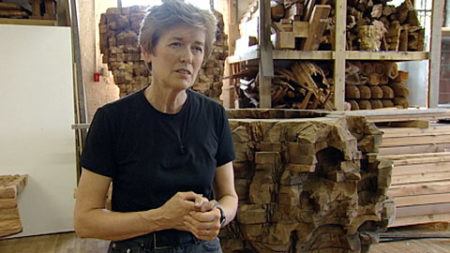Continue playing
(Time remaining: )
Play from beginning
Continue playing "{{ controller.videos[controller.getVideo(controller.currentVideo)].segmentParentTitle}}"
{{controller.videos[controller.getVideo(controller.currentVideo)].title}} has ended.
"Weeping Plates"Ursula von Rydingsvard
Ursula von Rydingsvard has worked with red cedar for over thirty years. Soft and fragrant, the cedar beams cut, assembled, and glued by the artist can, at times, resemble fabric more than it resembles wood.
Her use of monumental scale and organic form is exemplified through her 2005 sculpture, Weeping Plates, of which the artist says, “I feel this is to be one of the most vulnerable pieces that I have made.” The artist’s puzzle-like surfaces tend to visually reference other man-made tools that seem to echo the artist’s family heritage in pre-industrial Poland, before the second World War.
Credits
Producer: Susan Sollins & Nick Ravich. Camera: Joel Shapiro. Sound: Mark Mandler & Roger Phenix. Editor: Steven Wechsler. Artwork courtesy: Ursula von Rydingsvard.
Closed captionsAvailable in English, German, Romanian, Italian, Japanese, Korean, Chinese, Italian
Through the Art21 Translation Project, multilingual audiences from around the globe can contribute translations, making Art21 films more accessible worldwide.
Interested in showing this film in an exhibition or public screening? To license this video please visit Licensing & Reproduction.
Ursula von Rydingsvard’s massive sculptures reveal the trace of the human hand and resemble wooden bowls, tools, and walls that seem to echo the artist’s family heritage in pre-industrial Poland before World War II. She builds towering cedar structures, creating an intricate network of individual beams and sensuous, puzzle-like surfaces. While abstract at its core, von Rydingsvard’s work takes visual cues from the landscape, the human body, and utilitarian objects—such as the artist’s collection of household vessels—and demonstrates an interest in the point where the man-made meets nature.
In the Studio
Liz Magor
El Anatsui
What are the qualities that hold your attention in the artist's work?
Ursula von Rydingsvard
Ursula von Rydingsvard
Ursula von Rydingsvard
